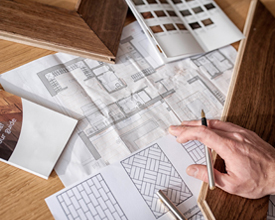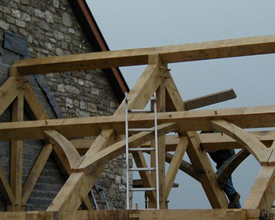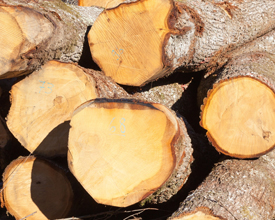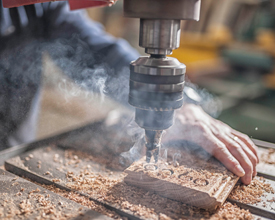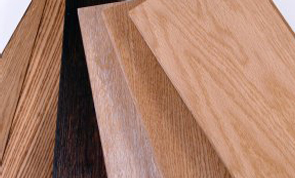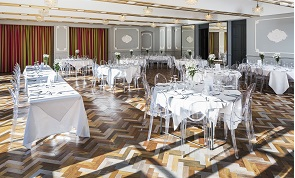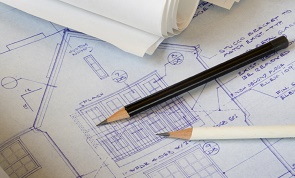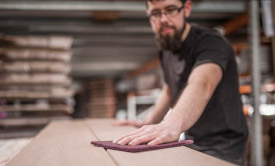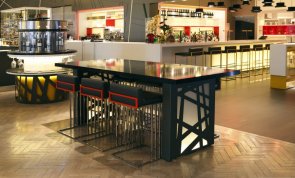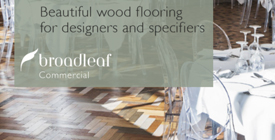Read our simple 3 minute guide to choosing your perfect wood floor. Written by our expert team it explains the common terms, highlights the key things to consider and generally aims to make buying a wood floor easier and more successful.
Where do you start?
The most important thing at the end of the day is that you like your wood floor, so we always advise that you begin by thinking about how you want your floor to look and feel once it's fitted. You will obviously need to think about installation requirements and budget as well, but once you have a clear idea of the finished look that you want we should be able to help you find a solution that will adapt to these.
Colour
Start with an idea of what sort of colour you want your wood flooring to be. You don't have to be too specific to begin with but it helps to have a general idea of whether you imagine a lighter or darker wood floor and whether you want the colour to be natural looking or more definite. Some wood floor finishes are quite subtle, adding only a little colour to the timber, whilst others are more dramatic and colour the wood more completely.
Grade
Once you have an idea of colour, decide how much variation you think you want in your wood floor. Most people would agree that natural variation is part of what makes real wood flooring special, but a rustic wood floor with a spectrum of colours and plenty of knots doesn't suit every taste or every room.
In the wood flooring world, grade is word used to define the amount of natural variation, be it knots, colour or grain. Unfortunately there aren't standard grades, so Rustic wood flooring from two different suppliers can contain one quite different levels of variation and look quite different once laid. To avoid confusion, look for a description of the grade and ideally an image that illustrates this. In the absence of a description, we would always recommend you ask for one rather than just relying on an image.
Broadleaf grades can be found
here - They are available as unfinished floors as well as forming the base for all of our finished products. We have more than most people so that we can make the level of variation in each floor more predictable and which grade we use for each product as standard is always explained in our product descriptions. Where knots are a feature of a floor, these are described as small or large. Smaller knots create a natural, warm looking floor and will be up to approx 25mm across their width. Knots in excess of this are defined as large and will create a floor with a more rustic character. Some knots will have cracks or holes which will be made good with specialist filler in all but our Traditional collection of floors.
A last point to bear in mind on grade is that the finish applied to wood flooring will also affect the level of variation you see. Lighter finishes will tend to enhance the natural variation of the timber, whilst darker ones will tend to minimise it. In the same way, more transparent finishes will show more of the natural grain and variation of the timber than more opaque ones.
Parquet V Plank
Plank and parquet floors are both beautiful, but if you like both and don't know which to choose, the following might help you.
Plank floors are quicker and easier to install than parquet, which means that they will be less expensive to install. They are also a simpler DIY option. That said, parquet floors have an undeniable wow factor, and create a feature all on their own. This is one of the reasons that they are such a popular choice for hallways, which can often be difficult to furnish due to their size and the need to be able to move through them freely.
Herringbone parquet is also a great solution for unusually shaped rooms such as L shapes or those entered from more than one direction, as the pattern works both ways, whereas plank floors tend to look better in one direction or another.
Board Width
If you choose a plank floor, you will need to think about the width of board you want, as this will have an impact on how the finished floor looks. Wider boards are a great choice for larger spaces where they balance the scale of the room and add intimacy, and they also tend to create a more streamlined, contemporary feel. They can have the opposite effect on smaller rooms though, whilst narrower boards will optically expand the space, and make it feel bigger. Most of our plank floors are available in a choice of at least 5 widths, so finding one that suits the scale of your room shouldn't be a problem.
If you want to create a an authentic traditional looking plank floor, use a mix of board widths, as this is how most of them were laid to make the most of the available timber. This is easy with Broadleaf floors, as all widths in the same format are compatible.
Solid v Engineered
There is a lot of conflicting and confusing information available about the difference between solid and engineered wood flooring. In simple terms, solid boards are made from a single piece of timber and engineered boards are made from multiple layers of wood.
In the case of planks the multiple layers, this adds additional stablity, which can mean that you can install them in ways, or places, that solid wood flooring of the same dimension might not suit.
In the case of parquet, each piece is typically much smaller, and inherently more stable than a plank, so there shouldn't be any difference between how and where you can fit solid parquet flooring, and how and where you can fit engineered parquet flooring - as long as the timber is properly dried and machined. So, if you are considering a parquet floor, you really don't need to worry about the solid or engineered question at all.
If you choose a plank, whether you need a solid or an engineered board will depend on how and where you are looking to fit your floor. As our plank floors are all available in engineered options this won't limit your choice, so you don't need to worry about it upfront. Just find the floor you like, and then use our Flooring Selector or ask our staff to confirm which board type will work best for your project.
If engineered flooring is the best solution, you don't need to worry about this an being a compromise in quality either. We don't use an engineered construction as an excuse to use less good quality, less reliable or less sustainable materials. Our award winning Strata boards are made from 3 layers of oak so that they feel and wear just like solid oak flooring and the base of our Essentials boards is made from premium, sustainably sourced hardwood ply, with no formaldehyde. And most importantly, the top layers for all of our engineered oak floors are made from the same carefully selected and graded European Oak as our solid oak flooring, so that visually, they are just as beautiful.
Underfloor heating
It is a common myth that solidl wood can't be laid over underfloor heating and that all engineered flooring can be, but this simply isn't true. It all depends how the timber is selected and dried and the flooring is made.
We have been successfully supplying solid and engineered flooring for use with underfloor heating for over 20 years and are recommended by Nu Heat, the UK's largest underfloor heating supplier. So, if you would like underfloor heating and a beautiful real wood floor, don't be put off. All of our wood floors have options that are suitable for underfloor heating as long as you follow our simple guidelines and we will be very happy to answer any questions you might have and offer you any advice you might need. Options that are suitable to be fitted over underfloor heating are clearly marked in the product table on each product page alongside their price.
Our guideance for fitting over underfloor heating can be found
here in our installation guide.
Finishes
All wood floors need to be sealed with a suitable finishing product before use, even if they are staying natural in colour. The majority of our floors are supplied fully sealed as standard, and most that aren't have the option be if you prefer. The exception is traditional parquet floors, whose hallmark icerink smooth finish can only be created in situ.
We finish our floors with hardwax oil, which has the advantage of being durable and practical, but also natural looking and easy to renovate. Oiled finishes are less durable and need more maintenance. Varnish or lacquer finishes are slightly more resistant to wear and tear in the first instance, but can't be easily maintained or renovated.
We typically use matt satin option, which is not too shiny, but whose soft, natural looking sheen catches the light, adds depth the colour of the floor and brings out the grain of the timber.
Maintenance
There is a myth that wood floors are high maintenance, and although once upon a time this was true with modern high performance finishes it doesn't have to be. Our hardwax oil finishes are durable, practical and very much designed for modern living. They will of course need some TLC to stay looking showroom beautiful, but are really no harder to look after than other type of flooring. A regular weep or vacuum, a wash with our Wood Floor Cleaner as needed, and from time to time, a quick feed with our Wood Floor Wax and they will stay looking great for years and years.
To find our more, see our Aftercare Guide.
g






